Table of Contents
Sunflower is an annual plant that belongs to the daisy family. Its scientific name is Helianthus Annuus which comes from the Greek words helios, which means Sun, and Anthos, which means flower. Sunflowers can come in various hues ranging from red, orange, and brown, but the most common one is the bright yellow sunflower with brown centers. These plants are native to America but are grown across the world.
These flowers are heliotropic; they move their flowers to always face the sun. The bright flowers attract a host of bees, birds, and butterflies, making them a haven for pollinators. These flowers also produce edible seeds used as a health food and also commonly used for extracting oil.
If you are contemplating adding these to your garden, read on to learn more about growing these in your garden.
Sowing Sunflowers in 6 Simple Steps
1. Choose a Variety of Sunflower
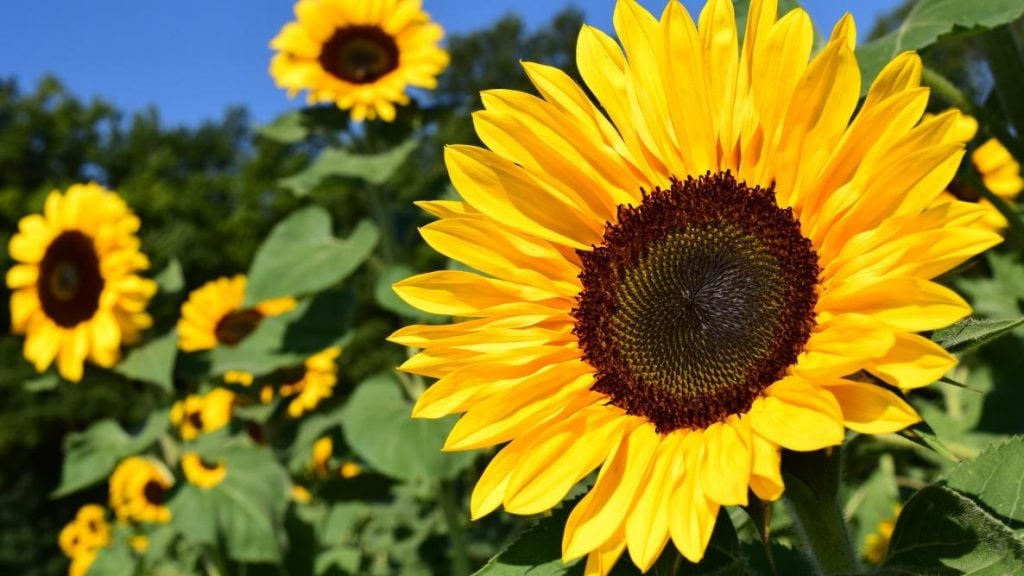
There are plenty of varieties of sunflowers to choose from, but remember that these are annual plants, and you will need to plant new seeds every year. The most common kind of sunflower to grow in your garden would be the annual Healianthus Annuus which grows to 4 ft tall with commonly yellow or orange flowers. Some large varieties of sunflowers can even reach up to 12 ft tall.
Some of the most common varieties are
Autumn Beauty– This is a branching variety that comes in a range of multi-coloured hues.
Chocolate– This comes in deep mahogany and cocoa brown shades, and the leaves and petals are completely edible.
Italian White– This variety produces creamy white blooms with brown centres
Dwarf Sunspot– This container variety produces large yellow flowers with dark centres.
Teddybear– These are double-petaled blooms with a fuzzy appearance
Taiyo– One of the heirloom varieties from Japan, this blooms large wide flowers with dark centres
2. Choose the Spot
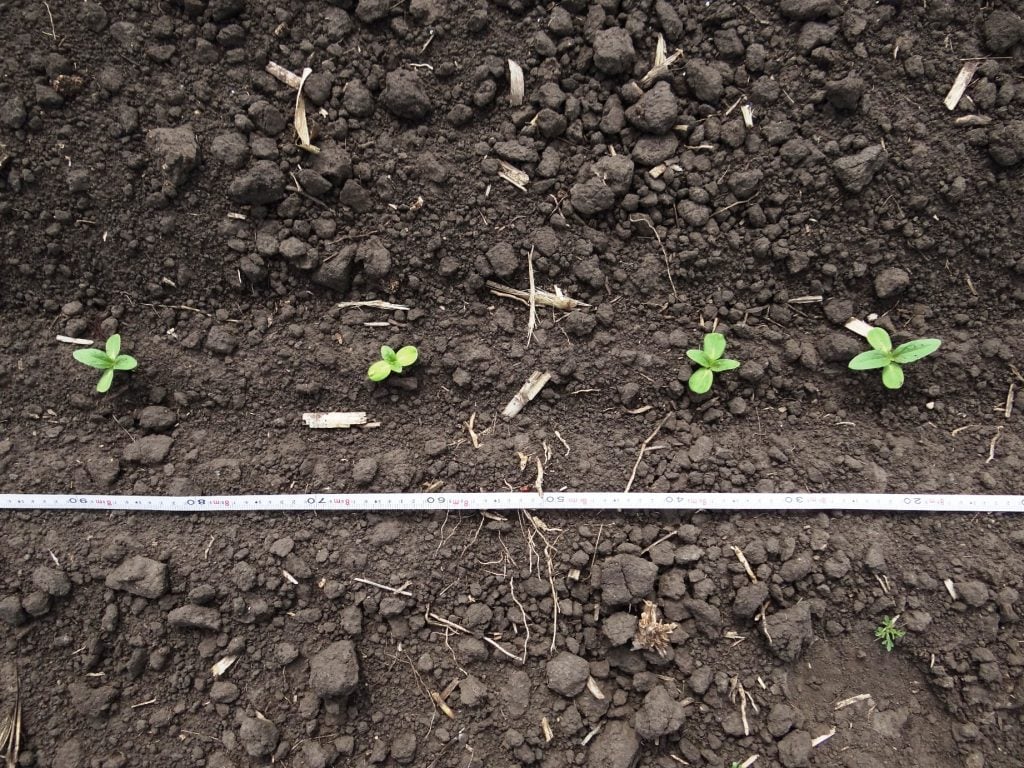
Choosing the location is an important consideration for growing sunflower plants. They need a sunny location with lots of natural sunlight with well-drained soil. They need up to 8 hours of direct sunlight for optimal growth. If grown in less light, the stalks might stretch in search of light and may cause the plant to collapse.
The flowers are heliotropic and hence need a lot of space for movement. Make sure to space out the plants such that each plant has room for movement. Also, some of the varieties have a large flower head and will need room around the flower. So provision appropriately.
These plants prefer soil that is well draining and loose for the roots to penetrate. Any clay, sandy, silt, or loam is good enough with a little feeding of nutrients such as phosphorus and potassium. These plants have a shallow root system that can rot in standing water. Choose a spot that is not in the lower areas of your garden, which might lead to water collection.
3. Prepare the Soil
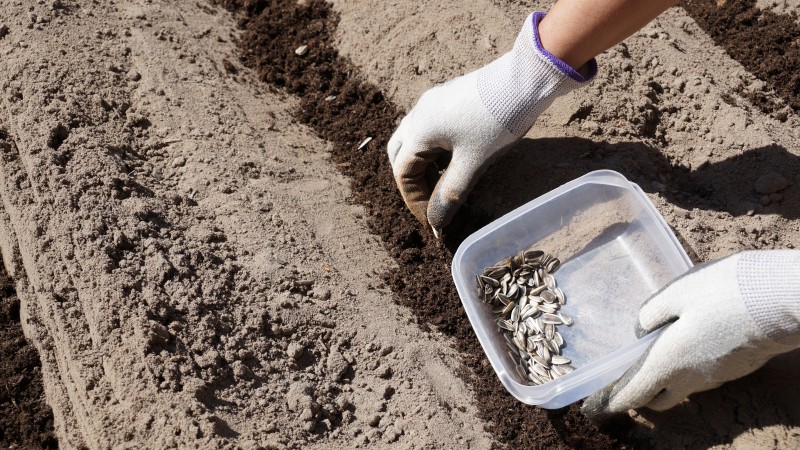
Sunflowers are hardy plants and non-fussy about the soil type they are grown in. You can grow them in any kind of soil, provided you take some caution with regard to feeding and keeping it moist and well-draining.
A mix of loam and humus in a ratio of 1:3 works well. Be sure to add some grit, sand, or perlite to help in draining the soil. These plants do not thrive in acidic soil, so make sure to correct the pH before sowing starts. The ideal pH is between 6.6-7.8, which puts it slightly on the alkaline side.
4. Sow the Seeds
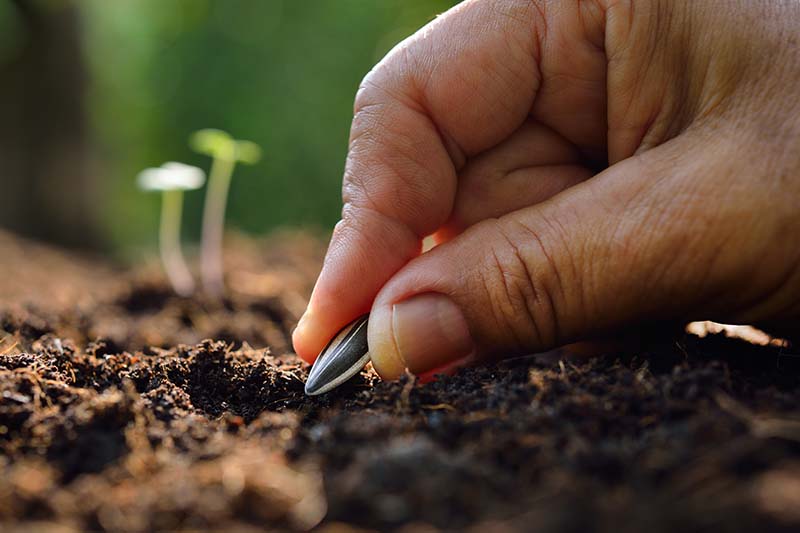
At the planting site, make a shallow furrow and plant the seeds at least 6 inches apart. Keep the spacing between rows at least 2 feet apart. This gives enough movement to the full-grown plant and flowers. It is best to space them about half the spread of the variety you have chosen.
You can choose to sow single seeds or sow more and thin them out at the seedling stage. The seeds need darkness to germinate. So cover the seeds lightly with soil and gently pat them down. Moisten the ground to just enough. These plants need an ideal temperature of 55-60 degrees Fahrenheit to germinate. So make sure that you sow at the right time when the soil is warm enough. Water the planting site regularly, making sure that the ground is moist and never cloggy.
5. Thin the Plants
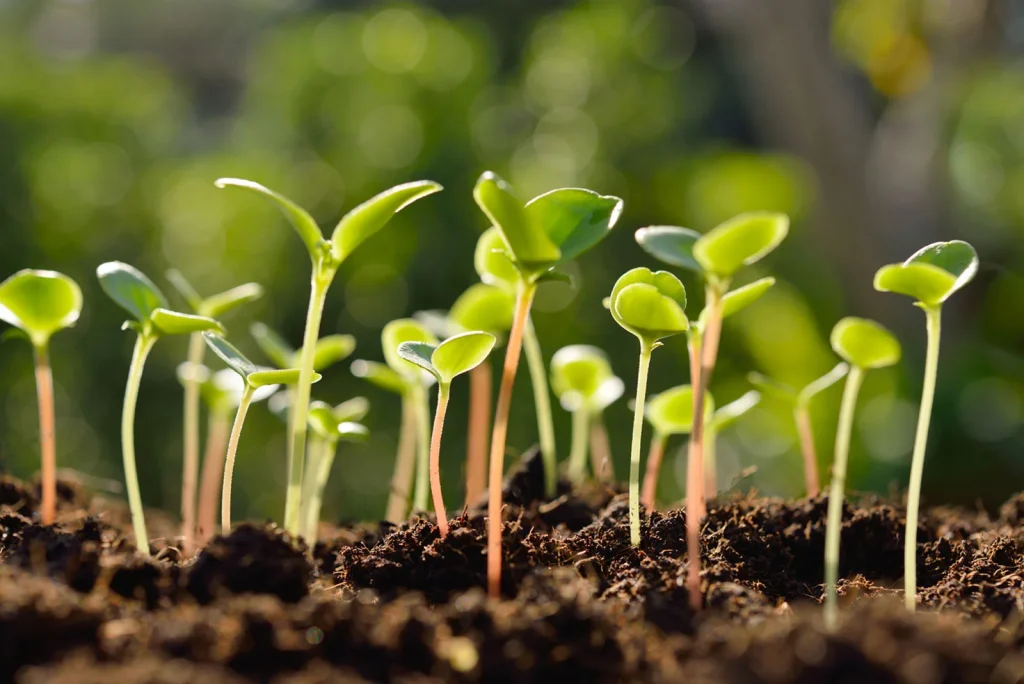
A few weeks into germination, the young seedlings need to be thinned out. Thinning refers to the removal of close seedlings which grow together to ensure that the stronger one has optimum access to all the nutrients. When the first leaves appear, thin the seedlings so that each plant has at least 2 feet of space for growth. The best way to do this is to water the site well and then gently tug to remove the plant to uproot.
6. Weed and Mulch- Aftercare
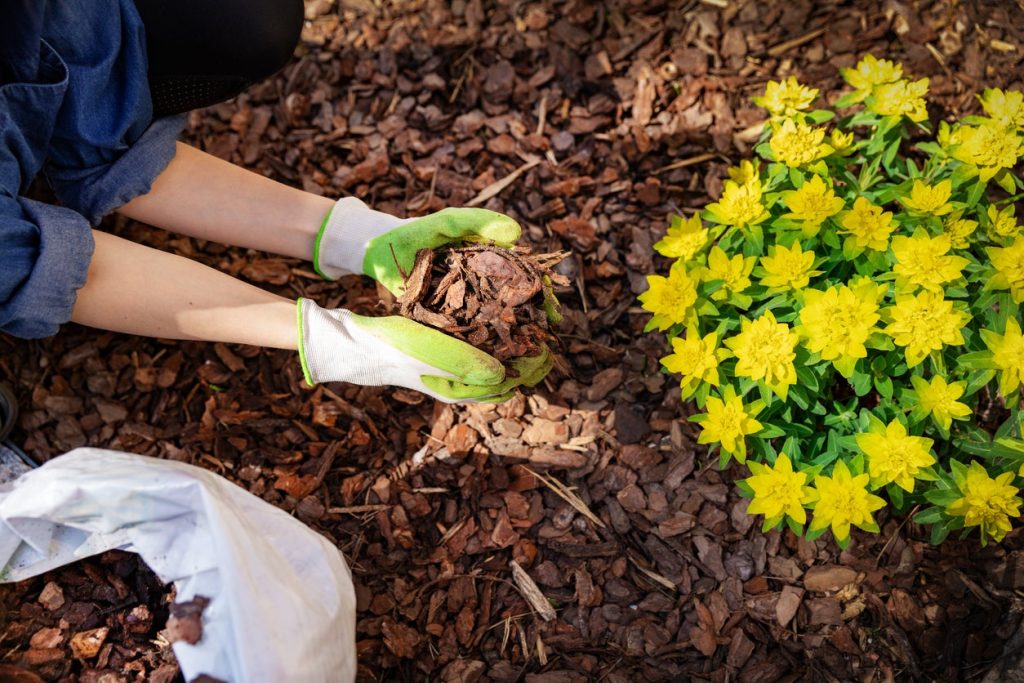
Sunflower plants are hardy and don’t need a lot of aftercare. But make sure to weed the planting site when your plants have grown a foot tall. Weeds can inhibit growth in your sunflower plants, so make sure to remove them. Once the wedding is done, mulch the plant to retain moisture and also thwart any further weed growth.
Some taller varieties of sunflowers have a tendency to keel, so consider staking them. Insert long canes into the soil and loosely tie them to the plant. The stakes also support the plants by getting blown over in strong winds. Insert the stakes such that they don’t damage or injure the roots.
Caring for Your Sunflower Plants in The Growing Phase
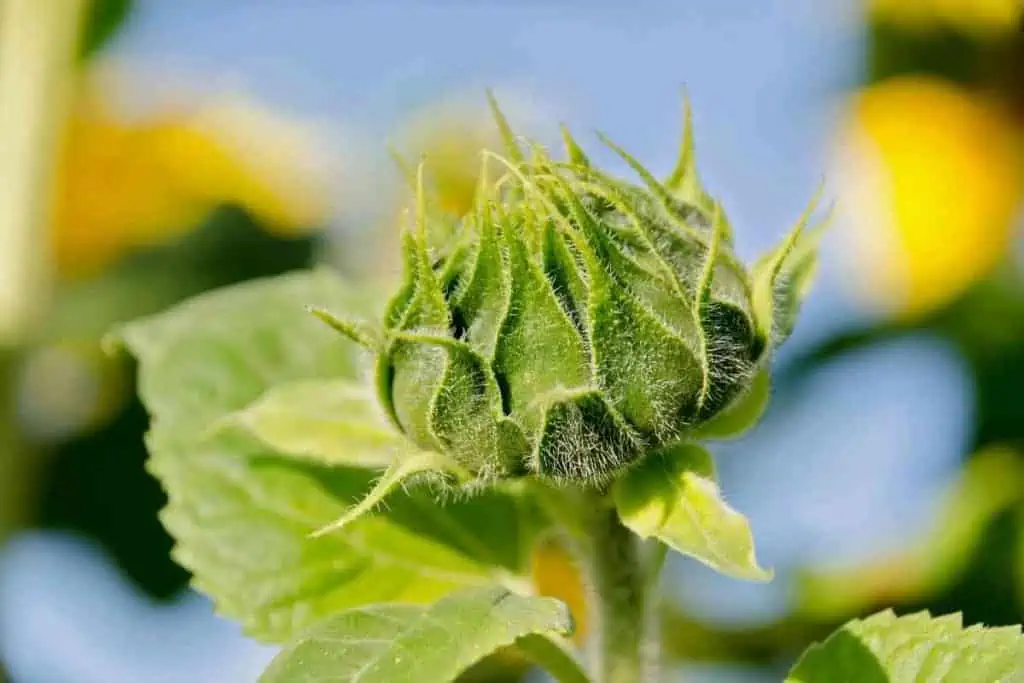
Protect young plants from snail or slug attacks by putting bait around the stem. When the plant is established, water less frequently, just enough to keep the soil moist. These plants don’t need overfeeding, and overfertilization can lead to stems breaking. You can choose to ass some slow-release fertiliser that has been diluted.
When to Sow Sunflowers in the Uk
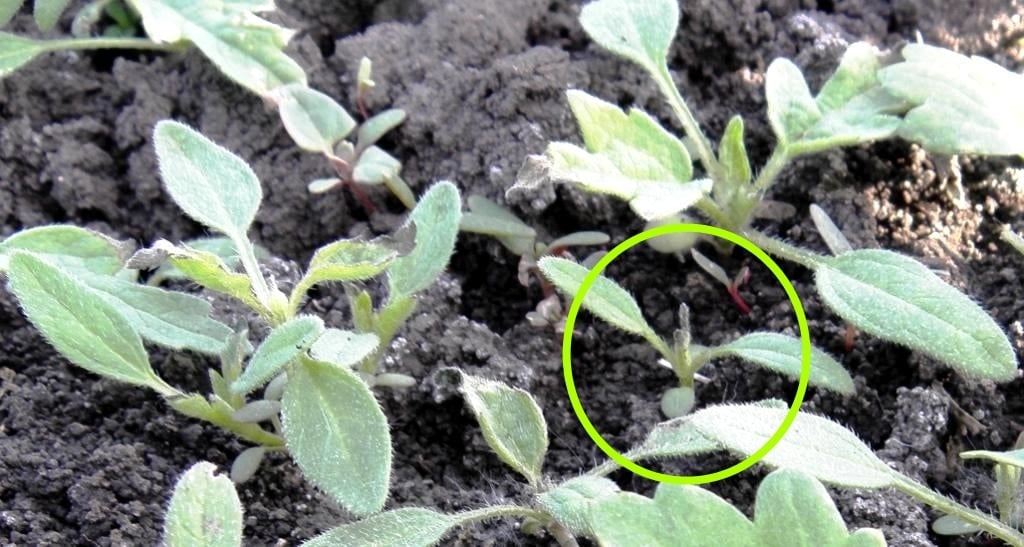
The ideal time to sow Sunflower plants is in March. The ground is just beginning to warm, and this is the ideal time to sow for better growth. Contrary to popular opinion, you can sow sunflower seeds in the winter months. This technique makes for growing hardier plants that can withstand difficult temperatures. Sowing plenty of seeds gives you a higher chance of success.
Harvesting the Sunflowers
1. For Flowers
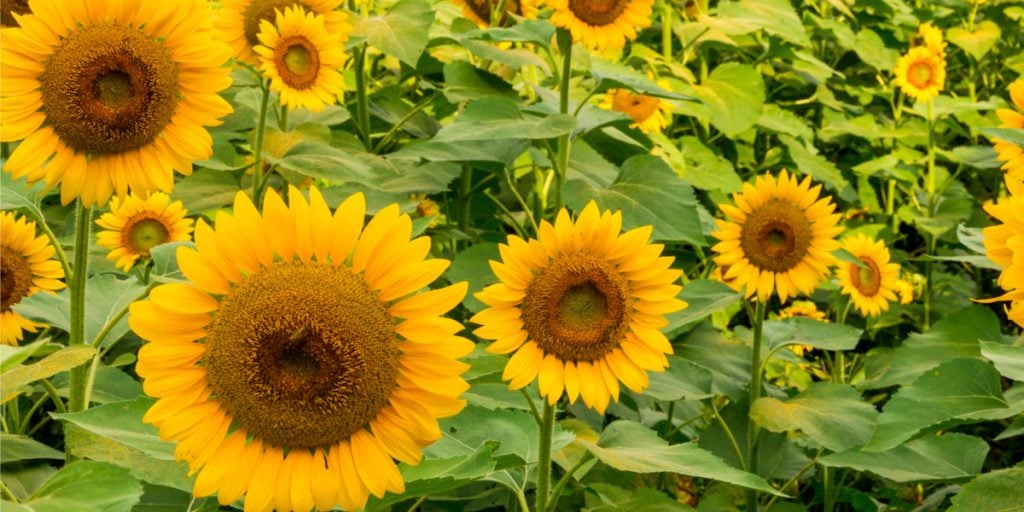
If making bouquets, cut the stem early in the morning, just before the flower blooms. When placed in water in a vase, these flowers should last at least a week. It is preferable to change the water every day to keep them looking fresh.
2. For Seeds
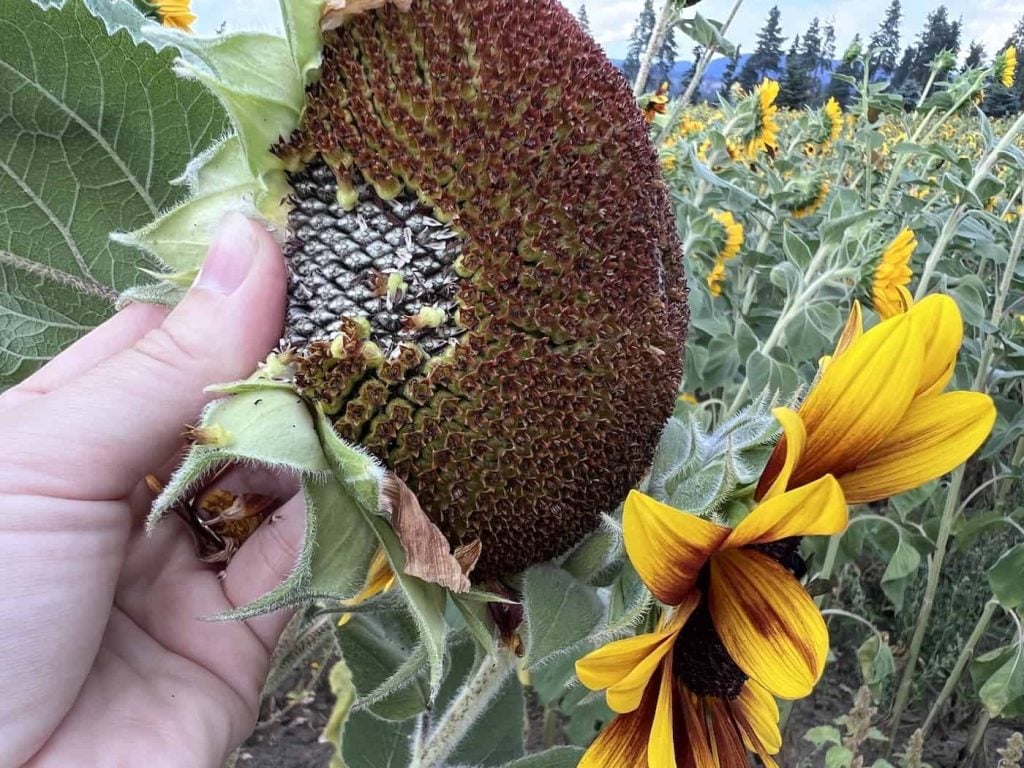
During the main growth phase, the sunflower stalks are green, but it starts turning yellow when seed production starts. The seeds are ready to be harvested when the stalks turn brown. Not all varieties of sunflower plants produce seeds. When the flower starts drooping, you will need to cover the flower heads with a bag to secure the seeds from attacks.
Sunflowers seeds make for a tasty snack. Either remove the flowers from the stem or leave them on the stem and let them brown and wilt till the seeds look slightly loose. Prune off the head of the plant and place it flat on a surface. Gently rub the seeded area to remove the seeds. Rinse the seeds well and dry them completely. You can use these seeds again for replanting, or go ahead and roast them for a snack.
Pests and Diseases
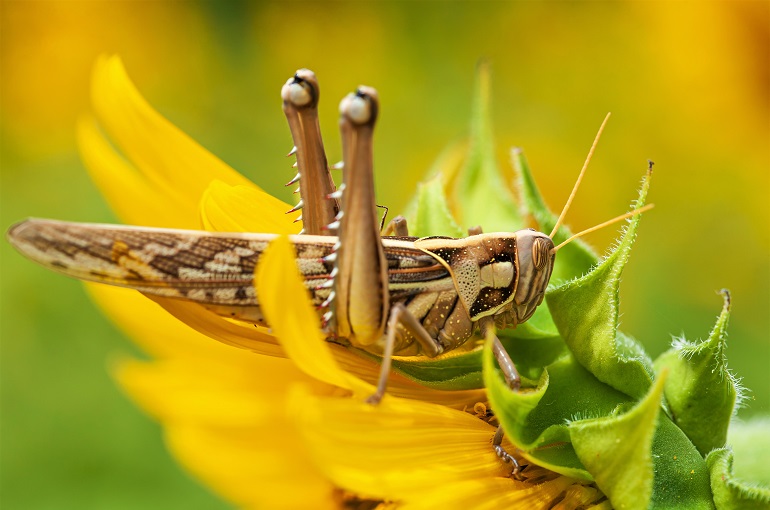
Sunflower plants are host to a variety of attacks from birds, mice, squirrels, and so on. Cover the seeds to keep them protected at the seedling stage. They are also prone to attack from slugs and snails. During the flowering stage, they attract a lot of birds looking to gorge on the seeds. You can put up mesh or brown bags around the flowers to keep these at bay.
Mildew
These plants are susceptible to fungal attacks like mildew, white mould, and wilt. Since these are annual plants, it is easier just to remove the diseased plants.
Growing Sunflower Plants
These plants are very easy to grow, and their cheerful appearance can brighten up your garden spot. Choose the dwarf variety if you plan to grow it indoors in containers. Make sure to provide them with a minimum of 8 hrs of sunlight for good growth. If planting outdoors, you can even go for the mammoth variety, which blooms into large, showy flowers in a variety of hues.
Whatever the reason for growing sunflowers, these stunning plants are a beauty to behold. And what’s more, the seeds, if harvested properly, can make for a tasty and healthy snack. If nothing, they can provide for the birds and insects that will frequent your garden to feast on these beauties and add to the charm of your home garden.
Frequently Asked Questions
Are Sunflowers Hard to Grow?
No, these are relatively easy plants to grow. They are low on maintenance and need less watering and almost no feeding. The only perceivable problem is preventing insect, bird, and critter attacks on the plants.
How Do I Grow the Large Giant Sunflowers?
You need to start with the right seeds. Choosing the right variety of seeds can create giant flower heads. Make sure to take care of the instructions in terms of soil, watering, and feeding optimally.
Which Is the Best Season for Growing Sunflowers?
Late Spring is the best time to plant sunflowers. Check if the ground is warm enough. These plants need a ground temperature of 80 degrees F to germinate.





